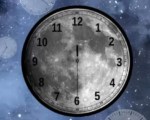Physics Breakthrough Brings Nuclear Clock Closer to Reality

Scientists have moved a step closer to developing a nuclear clock that could revolutionize timekeeping, offering unparalleled precision compared to current atomic clocks. This advancement, detailed in research published on September 4 in Nature, brings the concept of a clock so accurate it could run for a billion years without losing a second into tangible reality.
A New Level of Precision
The breakthrough involves a novel method of measuring time by observing the oscillations within an atom’s nucleus rather than its electrons. Atomic clocks, which currently set the standard for timekeeping accuracy, rely on the controlled energy transitions of electrons. These clocks measure time by counting the oscillations of electromagnetic radiation that excites the electrons, a process occurring billions of times per second.
The new nuclear clock technique, however, uses ultraviolet light to excite the nucleus of a thorium-229 atom embedded in a solid crystal. Researchers measured the frequency of energy pulses affecting the nucleus—essentially the “pendulum” of this nuclear clock—by counting waves in the UV signal with an optical frequency comb. This method promises to surpass atomic clocks by providing more accurate time measurements due to the higher frequency of the nuclear oscillations.
A Promising Prototype
Although the nuclear clock is still in development, the prototype achieved accuracy comparable to that of atomic clocks. Future improvements could enhance its precision even further. “There are a lot of things that we can push to further improve the accuracy,” said Chuankun Zhang, lead author of the study and graduate student at JILA. Zhang mentioned potential adjustments like optimizing laser alignment and frequency.
Dr. Olga Kocharovskaya, a distinguished professor at Texas A&M University, emphasized the significance of this development. “It leaves no doubts that such a clock is feasible and will be built soon,” she said. The thorium-229 nucleus, used in this research, produced a more stable and stronger signal than previously tested candidates like scandium-45.
Implications for Physics
Nuclear clocks could dramatically impact various scientific fields. Their extreme accuracy and stability might transform studies of earthquakes, gravitational fields, and space-time. Unlike atomic clocks, nuclear clocks could be simpler and more portable, not requiring high vacuum conditions or extensive shielding from electromagnetic disturbances.
Moreover, nuclear clocks could offer a new tool for investigating fundamental physics. By comparing frequency ratios between nuclear and atomic clocks, scientists could test the constancy of fundamental physics constants and explore potential shifts too small to detect with current technology. This could also aid in the study of dark matter, which interacts with particles in ways that are currently undetectable.
Looking Ahead
The journey to replacing or surpassing atomic clocks with nuclear clocks is still ongoing. However, the current advancements suggest that such a future might be closer than expected. As technology progresses and new discoveries are made, nuclear clocks could become central to cutting-edge experiments and explorations in fundamental physics.
















